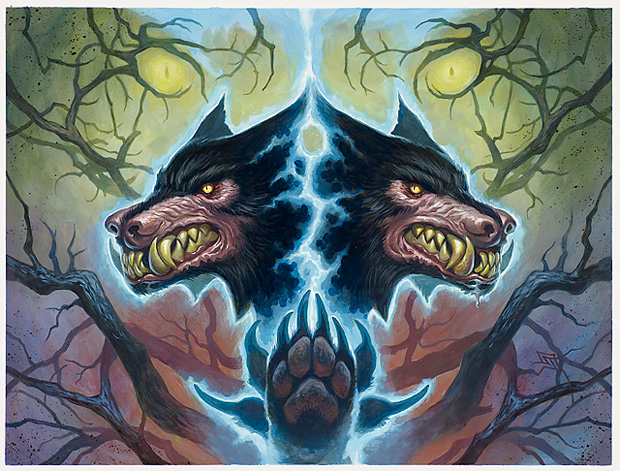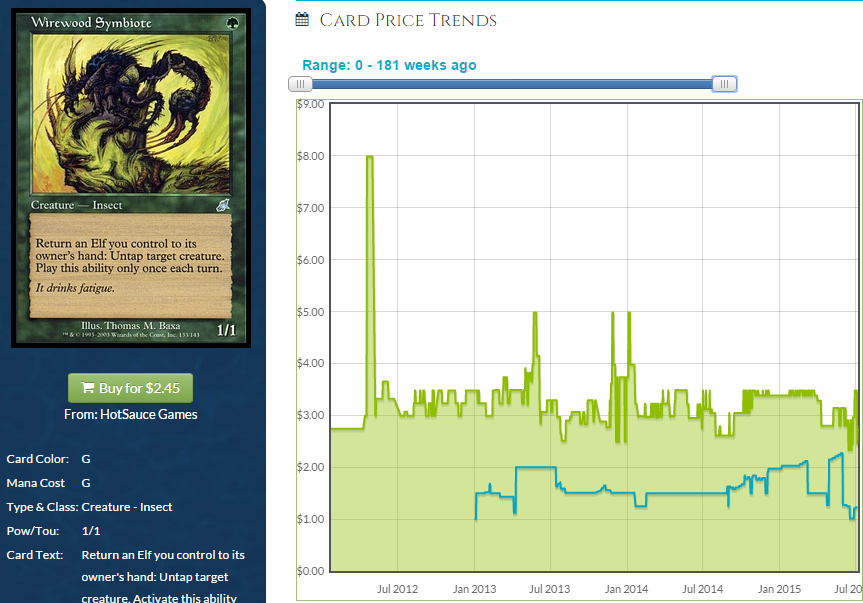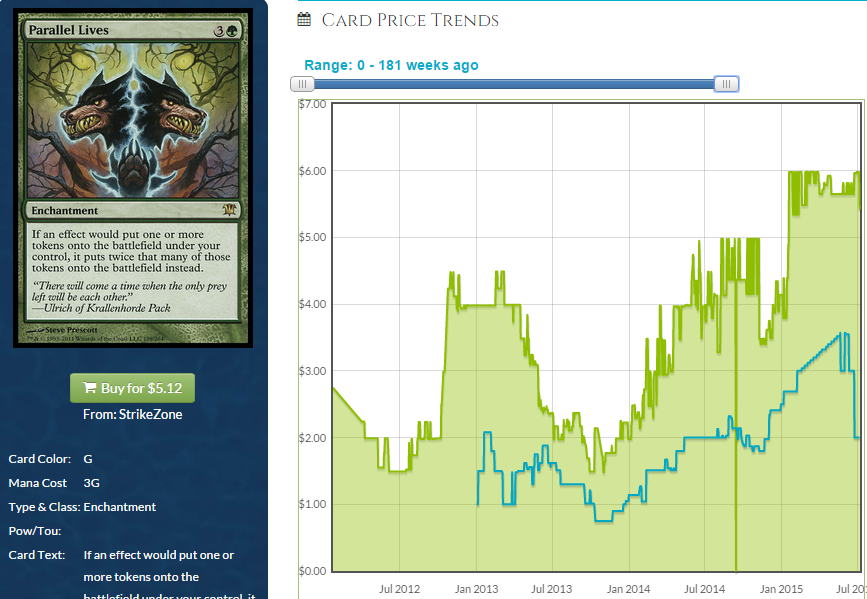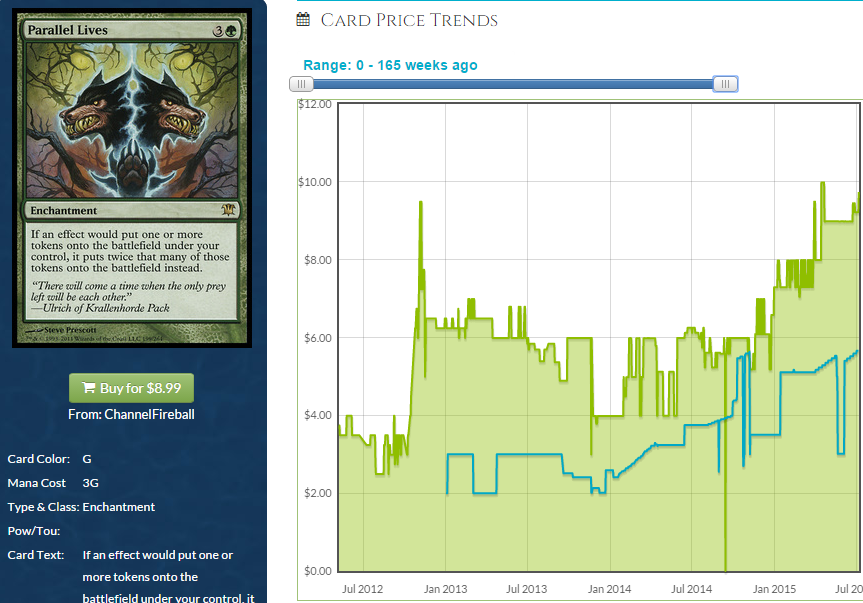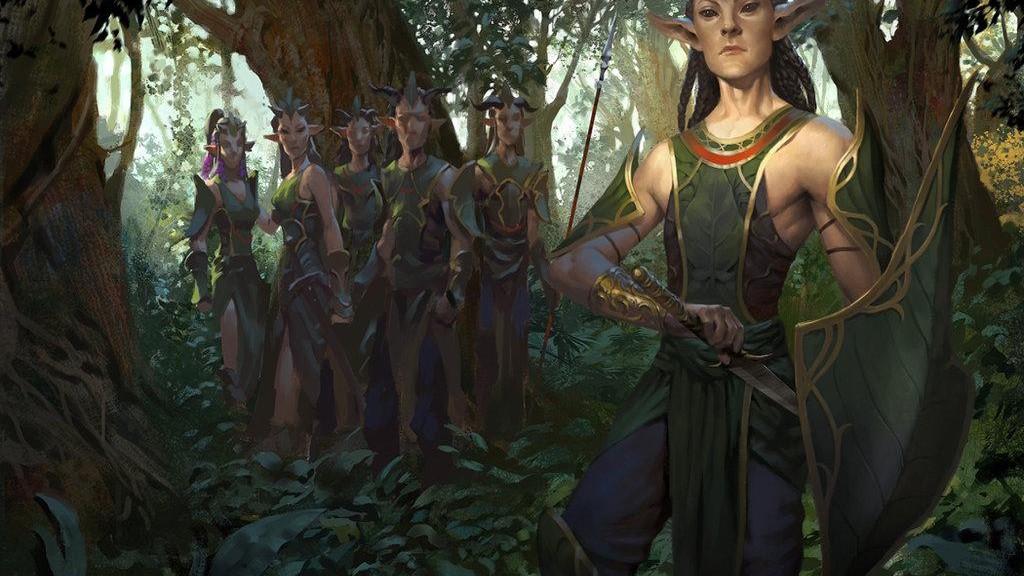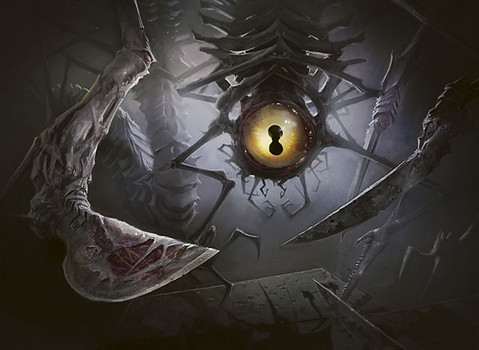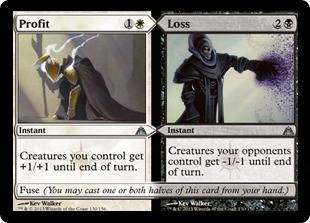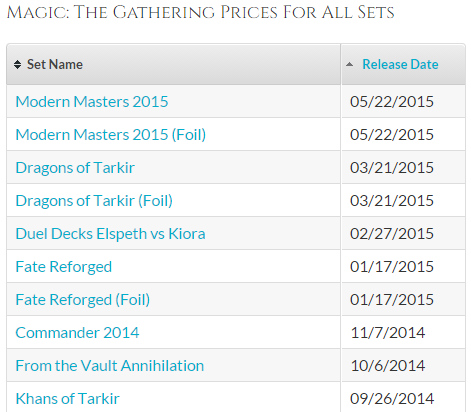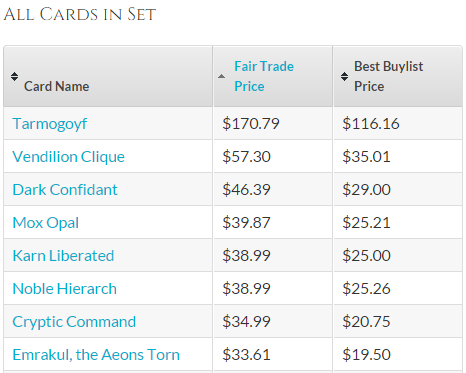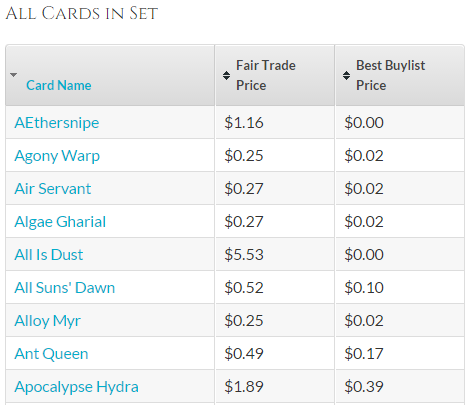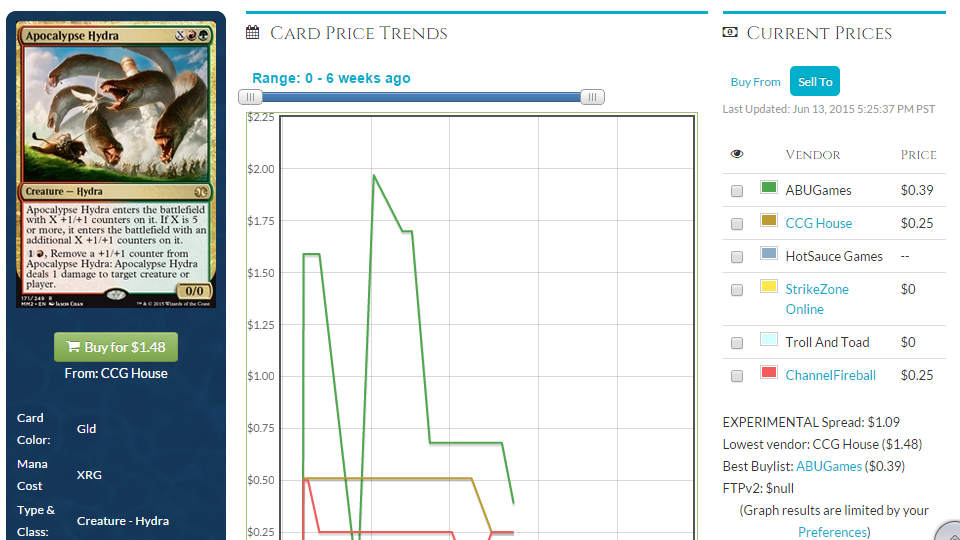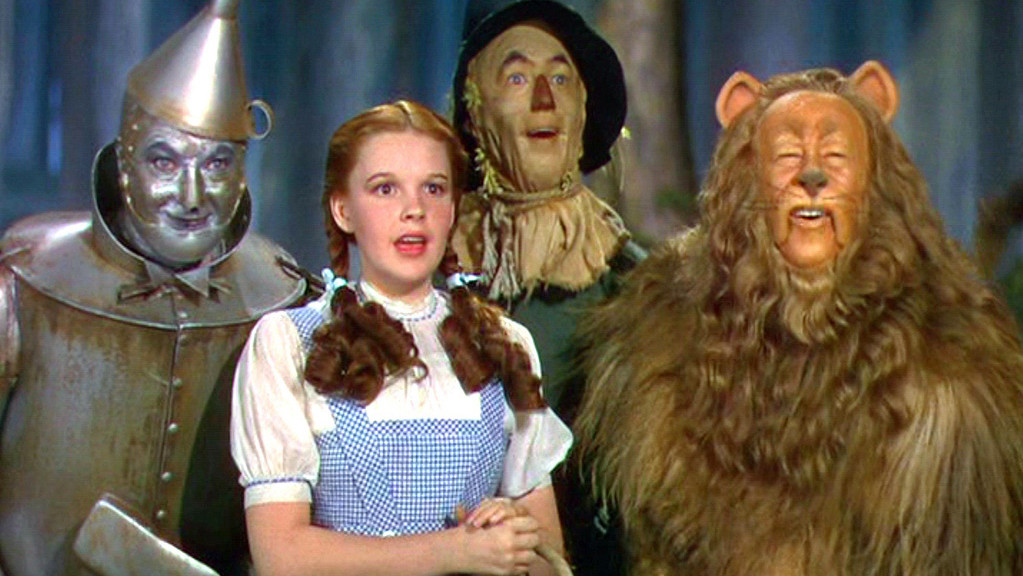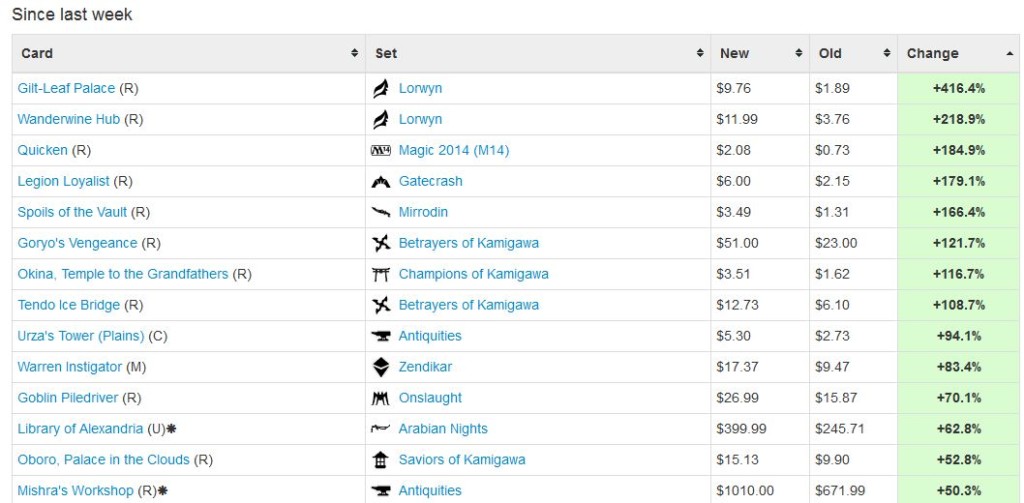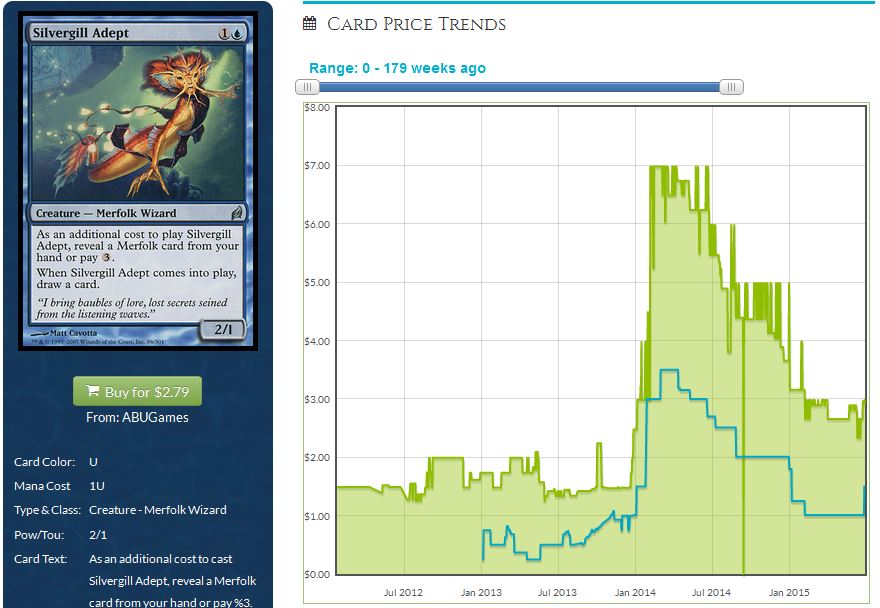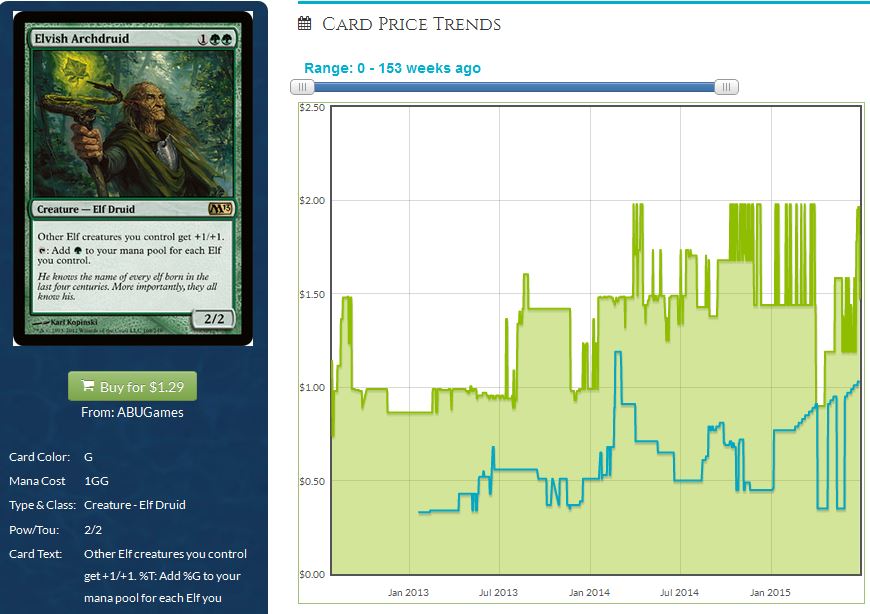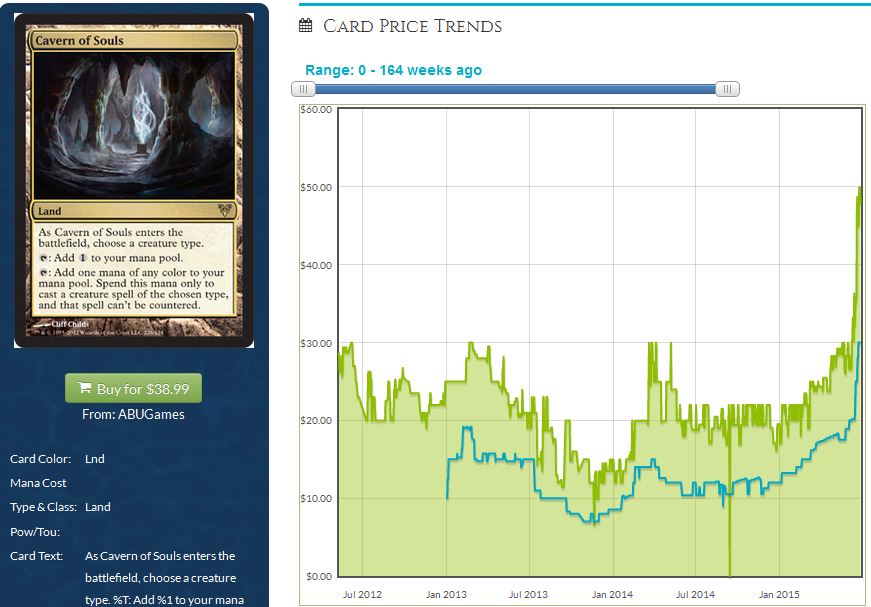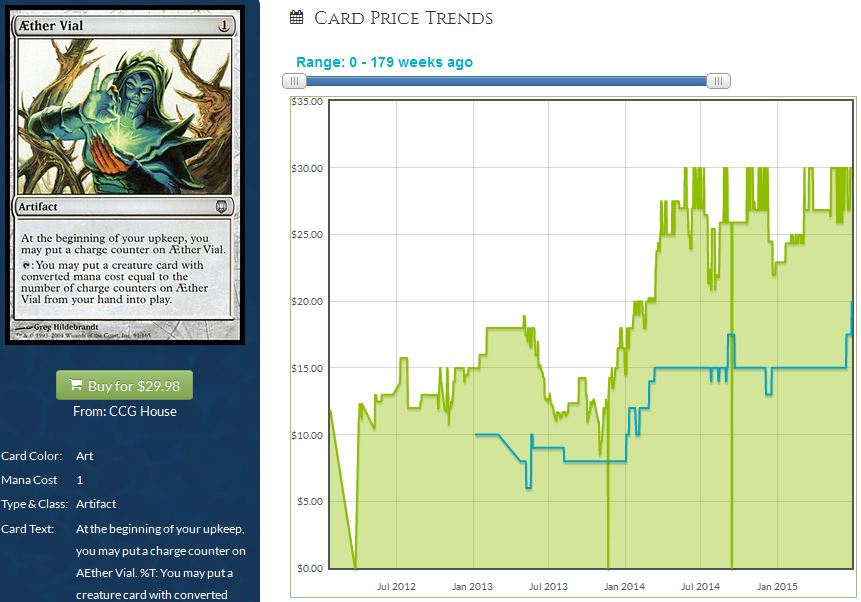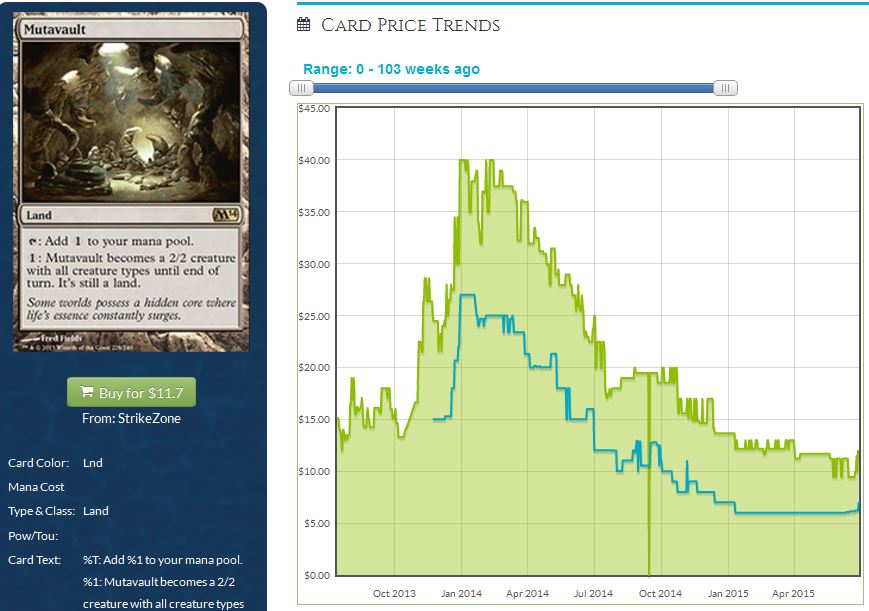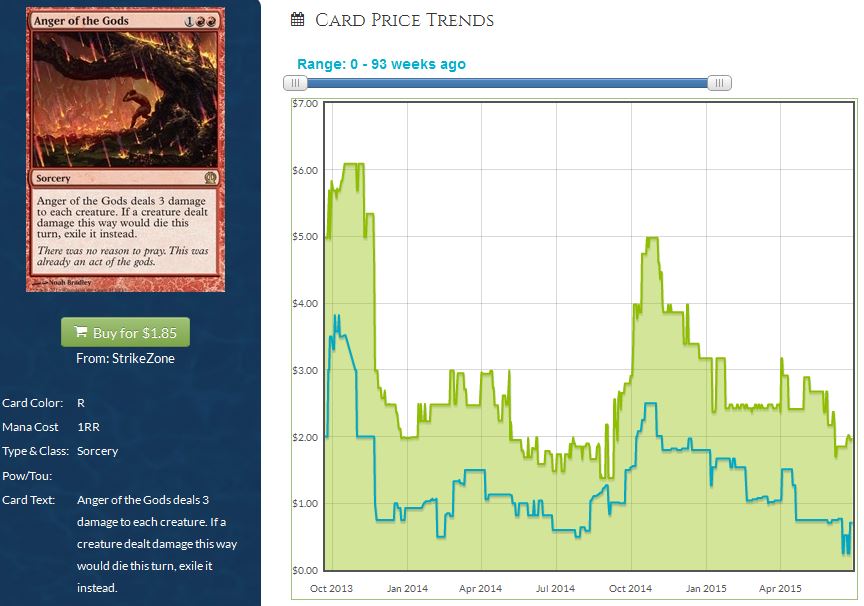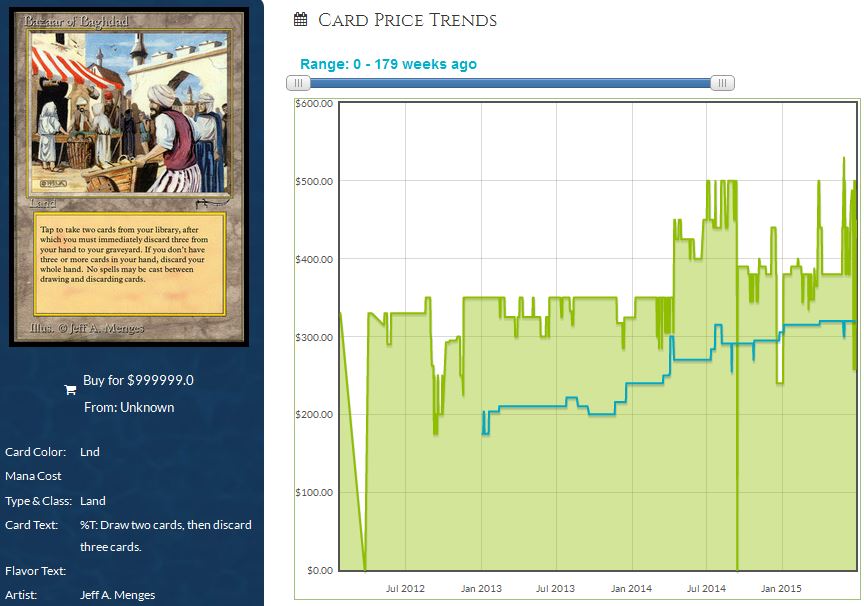By: Jason Alt
As I alluded to last week, I am going to spend the next few articles looking at cards from Origins that may either launch new archetypes or strengthen existing ones. I think there is plenty of EDH gas in this set and that there are a few archetypes that are going to get plenty bolstered.
Last week, we discussed future Superfriends builds brought on by the new planeswalkers in Origins, and I think we uncovered some really interesting cards that are overlooked, undervalued, and poised to do big things. Inexorable Tide shows us what a reprinting can do to prices, but it can also make foils look safer, and EDH player sure do love their foils, don’t they? With the emergence of Cube as a format that can affect foil prices, as well, foils are very saucy targets moving forward. So we may not know what we want to talk about this week, but at least we know how we want to talk about it when we figure that out, so that’s good.
Packing Shamans
There was a card in particular in the spoiler for Origins that really caught my eye. It’s not getting discussed much at all, probably because it’s not a mythic rare, or even a rare. It’s an uncommon and there isn’t much financial upside to the non-foils of this card. So why am I so excited about it? Why would we spend an entire article discussing a card that doesn’t have a ton of upside? Well, the answer to that is simple: we’re talking about the boats that are lifted by a rising tide, and sometimes you don’t need to drop a very big rock in the water to make big waves. Sometimes the card is a butterfly flapping its wings across the globe and a chain reaction of events takes care of the rest. Strap in, nerds, because it’s El Niño season and we’re about get hit with a wave so big that every other boat’s going to be all jacked up and our boat will be fine because we were prepared and got ahead of the storm and Lieutenant Dan was just daring the storm to kill him but he survived and I’m mixing my metaphors. Let’s just show the card I mean.
That’s the card. Does it fit in a narrow list of decks that are able to run it? Possibly. Would it benefit most greatly from being in a deck with Rhys the Redeemed, a potent token generator? Possibly. Does that mean this isn’t a ridiculous auto-include in more decks than you might think and a potent finisher? No, this card isn’t going to routinely deal 10 or more damage to people. You have to have a formidable board state to make that happen, but this spell breaks ground stalls open and that’s the most useful thing an EDH card can do in my opinion. So which generals are able to play this card and benefit easily from it?
This is a big one. Nath is a nathty character, he makes elf tokens, he strips cards out of opponents’ hands, and he sets you up to benefit from making them discard aggressively, turning cards like Mindslicer, Mind Shatter, and Waste Not into potent cards. Pop quiz, hotshot. How much is Waste Not worth?
Three dollars? It’s up from $2, down from $8, this card’s price is confounding. I don’t think $14 makes sense, but if someone bothered to buy the card out at one point, a lot of the copies were concentrated in one person’s hands for a minute. This could dip even more at rotation, even though this price is entirely predicated on EDH and casual and I think this is a $5 to $7 card long-term. It’s very unlikely to get reprinted (there’s no precedent for reprinting a “you make the card” winner) and the foil has upside either way.
This is a crazy, crazy graph. Instead of maintaining a multiplier, it has held at just about $10 even as the non-foil approached that price several times. If the non-foil has upside at $3, you’d better believe the foil has upside at $7.50. I like this pickup a lot. This is like Geth’s Grimoire on steroids.
Speaking of which, with a decreasing spread and increasing upside, Grimoire isn’t a bad trade target in foil if you find any. The more Nath we see, the more people will want to cheat with a Geth’s Grimoire.
Savra is another sweet legendary build-around, and having lots of elf tokens to sacrifice will really help out. Savra is a good general in her own right and an inclusion in my Nath deck as well. She’s fine in any GB elves build and also works with the GB graveyard-based strategies we see. Dredge is very potent with sac outlets, and green and black have plenty. A few that work well in decks with a lot of tokens and other elves have real upside.
Completely unperturbed by the reprinting in a Commander deck, this card shows solid growth and is a solid, solid card. Attrition does everything you want a sac outlet to do, and sacrificing one elf token that you got when they discarded a card to kill one of their creatures with Attrition plus everyone losing a dude to a Grave Pact trigger is potent. I think there is upside at $2.50 to $3, even with another reprint possible, seeing how Attrition shook that first one off. I used to buy these for a quarter out of binders and sell them for $5 a playset on eBay. Those were the days. I kept enough for my decks, which ended up being a pretty large number since I don’t know a ton of black decks that don’t want an effect like this. I’ve used this to protect my general from tuck spells back in the tuck days, get value out of a removal spell of theirs, and avoid returning creatures I have borrowed with Threaten effects. Attrition is a solid gainer and I would get on the train now, even with the spread doing goofy things. The foils are too expensive to trifle with.
Recently. the buylist price was so high on foil Perilous Forays that we see something I want to take a second to talk about. I am going to zoom in a bit on a region of the graph before I come back and discuss the card.
See the white area? When you graph the price (green) against the buylist price (blue) you sometimes see “white” regions where the buylist is above the retail price. This is an arbitrage opportunity. I won’t go a ton into arbitrage because it’s a bit outside the scope of this article and the series, but even if you don’t pounce on every arbitrage opportunity, what you can do is take note. There were two periods of potential arbitrage over the graph of foil Perilous Forays, which means dealers think there is upside. Currently the buylist price has backed way off, which tells me one dealer was paying a lot to get these in stock and then got enough copies and removed the card from its buylist, causing the buylist price to be set by the next-highest buyer. That means the demand for this card may be regional. Still, two “arbs” popping up in a one-year period coupled with the strong growth tells me this is a lowish buy-in with upside, demonstrated power, and the benefit of being in foil and less susceptible to a reprint blowout. I like foil Forays a lot, and tapping a Priest of Titania and sacrificing 11 elves to pull every last basic out of my deck in response to a Massacre Wurm saved my bacon in a game this weekend. It’s expensive to get out, but it’s worth it. It replaces Boundless Realms in my decks that want a sac outlet.
This is a terrible sac outlet in a deck that runs 1/1 tokens, but I’d be remiss if I didn’t point out how flat the price has been for a while. This is an EDH staple and it’s sicko in Cube as well. I think there’s upside here, eventually. Trade for these at $6 and put them in a shoebox and forget about them.
So what else is good in decks that want to have a ton of elves on the battlefield?
This card has been reprinted basically into powder. A price of $3 is a pretty cheap buy-in considering this card has demonstrated the ability to be way more and lords are always interesting, but I think it’s been printed too many times and could be printed more.
Wizards’s demonstrated willingness to reprint foils of this card make me wary as well. I don’t know if there is a ton of downside to buying the cheapest non-foil you can for $2.50 (the entire green Commander 2014 precon is looking like a great buy with Ezuri surging), but be careful. I brought up Perfect because I think it’s a deceptively bad buy.
This has been printed as a foil many, many times. Four times. That’s so many times. That’s one more than “too many” times for a foil to be printed. The thing is, though, I like this as a pickup at $3. Why? Let’s think about where this can get printed as a foil. Hardly anywhere! From the Vault: Elves? Commander’s Arsenal? Core sets that they’re not doing more of? I think the dealer price surging(ish) and the increasing demand for elves with Ezuri resembling the new Birthing Pod spells real upside for foil and non-foil alike. This card is bonkers and when copies start drying up, I expect foils to diverge wildly from non-foils. Priest of Titania this card is not, but sometimes it’s better and it’s legal in Modern which helps it immensely. Besides, why debate the merits of Archdruid versus Priest in EDH when you clearly run both?
If you’re trying to destroy them with Shaman of the Pack, you’ll want a way to find him.
Check out the foil Elvish Harbinger: a recent arbitrage opportunity, steady(ish) price, and a multiplier of two on a card with two printings. There is upside here, I think. The card is fluctuating between $4 and $5, but it wouldn’t take much of an increase in play to push it up. There just ins’t much movement here—the buylist price for the Duel Deck non-foil hasn’t budged a penny in two years. Any activity could see the few copies snapped up quickly. Don’t buy in for cash on a stagnant card, but be aware: this card is very good.
Not shocked to see that this card looks strong. It’s a good tutor in the best EDH colors. It lets you search for Craterhoof Behemoth at the end of their turn. That’s quite good. Enlightened Tutor has established that the ceiling could be around $16, so buying these at $8 seems fine, especially with the strong growth we’ve seen lately. Dealer confidence is up; retail price is up. Expect a leap and a plateau of $2 next year.
Just finding him isn’t enough, recurring him to smash them is important, too. How do we do that?
No super-duper upside here, but just remember to keep some of these on-hand to trade out. Wirewood Symbiote is bonkers with elves that have enters-the-battlefield triggers, and since there are so few, Symbiote is underplayed right now.
We talked last time about how Superfriends would give us some real upside with Doubling Season but not so much with Primal Vigor. How’s Primal Vigor doing?
Not bad! Having called this a pick at $4, I obviously feel great about the price doubling since then. Vigor isn’t done, I feel. While you can’t stack counters on planeswalkers and you can accidentally benefit your opponent, Primal Vigor is nuts with token decks. Imperious Perfect, Nath, Waste Not: your deck really benefits from spitting out a ton of tokens and this can help you go very wide. Doubling the number of elves you put out matters a great deal when you can KO your opponents with Shaman. This is good in lots of other decks, so the overlap will be very good. I said to buy these at $4 and I’m saying now that $8 isn’t a bad buy-in either. You don’t like to buy stuff after it doubles since it doubling again is somewhat unlikely, but this card has upside and low reprint potential. An $8 card in a $20 precon could do any number of things, all of them good.
This could be based on an irrational fear, but Parallel Lives strikes me as a card that is super, duper, duper reprintable. I was buying the non-foils very cheaply and still had a lot left when they hit $4 and I sold then. I am just waiting for the next EDH supplementary product or even Duel Deck to have a Parallel Lives reprint (new art would be sweet). The foils can help us dodge that.
Now this I can f@#% wit. A mere multiplier of two, very steady growth, decent dealer confidence, art that looks good in foil—I expect a divergence from the non-foil price soon. I think a higher multiplier is more appropriate and I expect that to be on the horizon. This card is a no-brainer, honestly.
I think these are all cards that have significant upside once Shaman of the Pack is out. I think Shaman will be a card you will find randomly in draft chaff for free sitting on tables, and I plan to pay cash for any foils at the prerelease that I can find. This card is good and it just might make some other cards better.
Do we want me to stop this format after Origins is released? Immediately? Sound off in the comments! Until next week.
